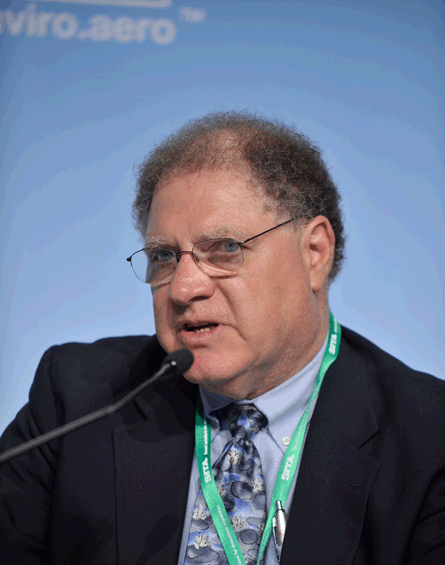Richard Altman is executive director of the Commercial Aviation Alternative Fuels Initiative, working closely with aviation's private and public sectors in a bid to achieve carbon neutral growth by 2020
Is there anything you miss from your 39 years as a propulsion engineer at Pratt & Whitney?
I miss the day-to-day contact with my colleagues. That said, I still interact with many of them. I am also in continuous contact with the people with whom I worked at the Federal Aviation Administration, the airlines and the environmental community where I served on the Transportation Research Board Aviation/Environment Committee and the Partner Center of Excellence. In reality I began to function in advanced business development 10 years into my 39-year career. That is what I do now. The Commercial Aviation Alternative Fuels Initiative was the easiest of transitions for that reason.
What duties keep you busy?
Constant and closed communications with the leadership team is the essential piece in making the CAAFI coalition work. Every day brings new challenges on how to continue to build CAAFI while not changing the character of the coalition that we formed when we were small. Just keeping the communications loop well oiled and serving our sponsors and stakeholders well is the biggest task in this regard.
 |
|---|
© Air Trasnport Action GroupAltman's contacts span beyond the aviation and energy sectors |
The CAAFI coalition is structured to place responsibility in our team leaders (R&D, certification, environmental and business). In addition, I have two exceptional deputy executive directors in Nathan Brown of the FAA and Kristin Lewis of DOT/Volpe.
Are there sectors you would like more help from?
By and large the aviation industry has done a tremendous job of positioning itself to become a leader in alternative fuels. Major credit goes to our customer leads at the US Air Transport Association, and globally with the International Air Transport Association. Also, much credit to air force colleagues who have done much work but realise that they are only 10% of what the commercial market is.
The private sector, both legacy (oil companies) and new companies, are also pulling their load for the most part. They are creating the opportunities for alternative fuels to take off.
Where we need more help is pretty much where everyone has a problem now - the private financial sector. Capital formation is our, and alternative energy in general's, greatest problem.
What 2010 developments are you most excited about?
We need production memoranda of understanding in place between energy producers and the airline industry for long-term production buys. CAAFI's goal is to have at least 10 in place by 2013 in the USA. This is crucial if our industry is to achieve carbon neutral growth by 2020.
Second, we need to complete our hydrotreated renewable jet certification under ASTM D7566. These are the fuels that flew in December and January a year ago. This will both be important in opening a whole array of feedstocks for production and also affirm our ability to turn around a certification process demonstrated for Fischer-Tropsch fuels in 2009.
Is every aspect of your job personally rewarding?
I hope that everyone who reads this piece at sometime in their career has the opportunity to use their full degree of professional capabilities and interpersonal skills to pull together something that is really important to the industry they have served. I am exceedingly grateful to the CAAFI team for what they have done and continue to do.
Source: Flight International




















